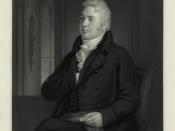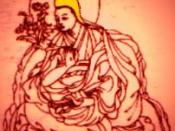What is a journey? What are its merits? Is a journey merely a distance traveled? Or is there a greater meaning behind every step that is taken, metaphorically or not? Today I am here to give my understanding of journey at this local Arts festival. But I am still, as yet, unable to give my definition of journey as I feel there is still much to learn about this concept. Perhaps this is, after all, what is the crux of this study - that the idea of 'journey' is open-ended and debatable. Though, many texts, such as 'This Lime Tree Bower My Prison' by Samuel Taylor Coleridge, 'The Wind in the Willows' by Kenneth Grahame, and 'The Art of Happiness - A handbook for living' by His Holiness the Dalai Lama and Howard C. Cutler has given me insight into a very convoluted notion.
There are many impressions of journey that are represented throughout a variety of texts and concepts such as 'This Lime Tree Bower My Prison' by Coleridge.
'Lime Tree' explores the idea of taking a journey through the imagination. This poem is written in blank verse, a new form of writing in Coleridge's literary period and tells of his imaginative journey through the wonders of nature. He uses the first person narrative and a conversational tone to actively engage his audience and it gives them an emotional response to his situation. His writing absorbs the reader further still by appealing to all the senses using sensual imagery, which is delivered in a tone of excitement, almost pleasant urgency, created by his particular use of commas, which contributes to the cumulation of images. We "follow" his eyes and hear, such sounds as "The roaring dell", and see the dell "o'erwooded, narrow, deep", and...


